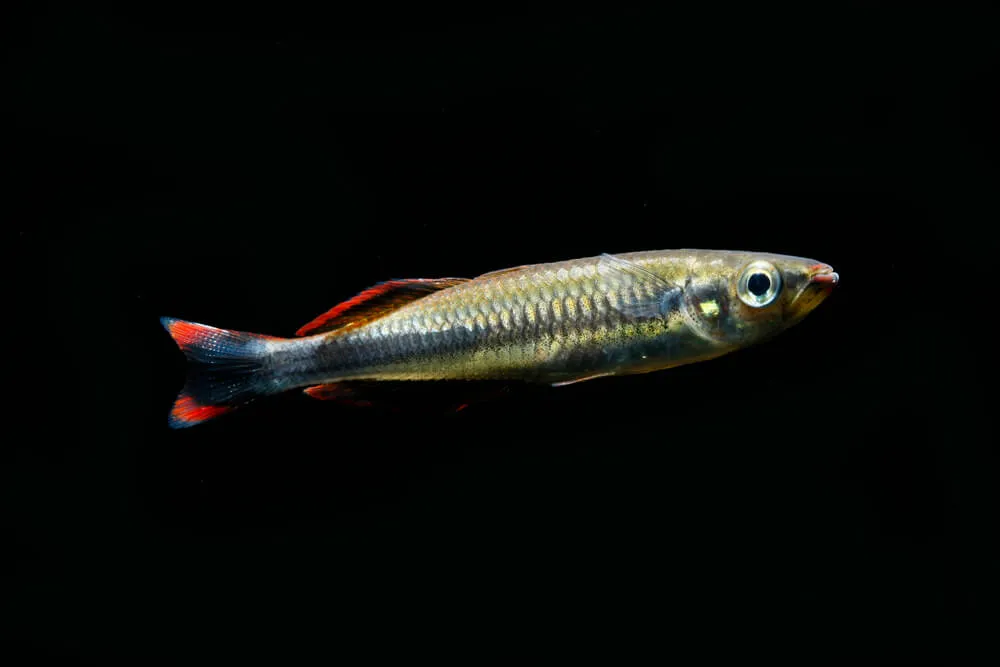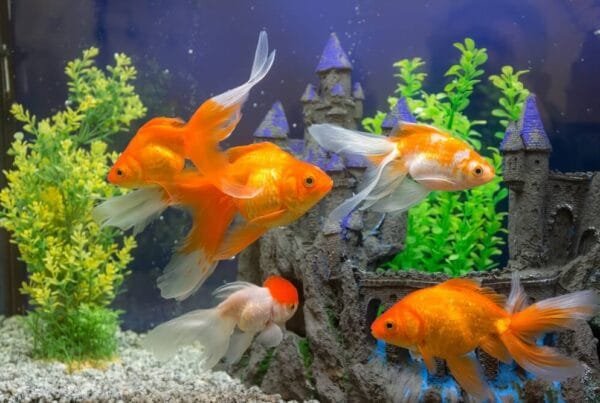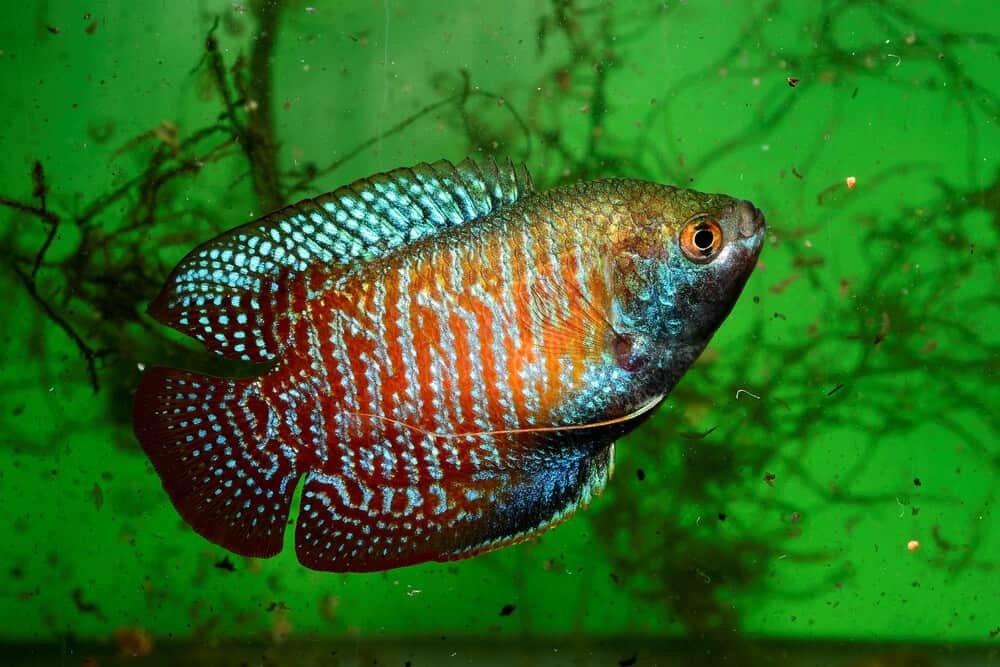So you’ve got yourself some Kuhli Loaches, eh? These cute little creatures may be small, but their genders can be a bit of a mystery. Don’t fret, though! In this article, we’ll explore some foolproof methods to help you determine whether your Kuhli Loach is a boy or a girl. By the end, you’ll be able to confidently identify the gender of these fascinating aquatic friends. So let’s dive in and unravel the mystery of Kuhli Loach gender identification together!
Physical Characteristics
Body Length
Kuhli loaches, also known as coolie loaches or pangio kuhlii, are small freshwater fish belonging to the family Cobitidae. They have slender bodies that can reach a length of up to 4 inches (10 centimeters) when fully grown. However, the average size of adult kuhli loaches is around 3 inches (7.5 centimeters).
Body Shape
The body shape of kuhli loaches is unique and distinguishable. They have eel-like bodies that are elongated and cylindrical in shape. Their bodies are laterally compressed, which means they are flattened from side to side. This body shape enables them to maneuver and navigate through tight spaces and narrow crevices in their natural habitats.
Coloration
Kuhli loaches display beautiful patterns and coloration that can vary between individuals. Typically, they have a light brown or olive-colored background with several dark, vertical bars running along their body. These bars can sometimes take on a reddish or blackish hue. The coloration of kuhli loaches serves as camouflage, allowing them to blend into their environment and remain inconspicuous.
Behavioral Differences
Social Behavior
Kuhli loaches are social fish and are best kept in groups of at least five to six individuals. They thrive when they have companionship and feel secure within their social group. You may observe them swimming, foraging, and exploring together, often forming a tight-knit shoal. Their social behavior also extends to their interactions with other fish species in the aquarium, as they generally exhibit peaceful and non-aggressive behavior.
Activity Level
Kuhli loaches are predominantly nocturnal creatures, meaning they are most active during the night. They have adapted to this lifestyle by developing sensory adaptations that allow them to navigate and find food in low-light conditions. During the day, they tend to retreat and hide in the substrate or seek out dark and sheltered areas in the aquarium. Providing them with suitable hiding spots, such as caves or plants, will help them feel more secure and encourage their natural behavior.
Courtship Behavior
When it comes to courtship and breeding, kuhli loaches exhibit fascinating behavior. During the mating season, males become more active and engage in elaborate courtship dances to attract females. They will swim in spiraling patterns, twirl their bodies, and display vibrant colors. Females, on the other hand, will show interest by responding to the male’s display and initiating physical contact. Courtship behavior in kuhli loaches is a captivating display of natural instincts and can be quite a spectacle to observe.
Observing Mating Behavior
Mating Dance
The mating dance of kuhli loaches is a mesmerizing sight to behold. The male swims energetically, creating swirling patterns in the water to catch the attention of potential mates. He may also change his color intensity, becoming more vibrant and eye-catching. This dance is not only a courtship display but also a way for the male to showcase his fitness and allure the female.
Egg-Laying Behavior
Once the courtship dance is successful and a female is interested, the male and female will engage in a mesmerizing bonding ritual. The female kuhli loach will lay her eggs on the roof or walls of caves, plants, or other surfaces within the aquarium. These eggs are usually adhesive, allowing them to stick to the chosen substrate. The process of egg-laying is a crucial step in the reproductive cycle of kuhli loaches and an exciting behavior to observe.
Guarding Behavior
After the eggs are laid, it is not uncommon for the male kuhli loach to guard the spawning site diligently. He will watch over the eggs, chasing away potential threats and ensuring their safety. This guarding behavior is essential because it helps protect the eggs from being eaten or disturbed by other tank inhabitants. Observing this behavior provides valuable insights into the paternal instincts and dedication displayed by kuhli loaches.
Vent Comparison
Location
To accurately determine the gender of kuhli loaches, it is essential to examine their vents. The vent, also known as the cloaca, is the opening through which waste and reproductive products are expelled. In kuhli loaches, the vent is located near the base of their anal fin, towards the rear end of their body.
Size
When comparing the vents of male and female kuhli loaches, there can be noticeable differences in size. Male kuhli loaches tend to have a slightly larger and more prominent vent compared to females. However, it is important to note that vent size alone should not be the sole criteria for determining the gender, as there can be variations among individuals.
Shape
Apart from size, the shape of the vent can also provide insights into the gender of kuhli loaches. Generally, male kuhli loaches have a more rounded and pronounced vent, while females may have a slightly narrower and less prominent vent. However, as with size, it is crucial to consider multiple factors when identifying the gender, as there can be variations within the species.
Size Differences
Adult Size
Kuhli loaches exhibit sexual dimorphism, meaning there are differences in size between males and females. On average, female kuhli loaches tend to be slightly larger than males. Adult females typically reach a length of around 3 to 4 inches (7.5 to 10 centimeters), while males are usually slightly smaller, ranging from 2.5 to 3.5 inches (6 to 9 centimeters).
Growth Rate
When it comes to growth rates, kuhli loaches can vary based on various factors such as food availability, tank conditions, and genetics. Generally, kuhli loaches have a moderate growth rate, reaching sexual maturity and their maximum size within two to three years. Providing a balanced diet, appropriate tank conditions, and adequate space to swim and explore can promote healthy growth in these fascinating fish.
Age Differences
Developmental Stages
Like many fish species, kuhli loaches go through different developmental stages as they grow. They start as eggs, which hatch into tiny larvae with an attached yolk sac. As they grow, they transition into fry, developing more distinct features and becoming independent from their yolk sac. With time, they become juveniles, assuming the characteristics and behaviors of young kuhli loaches. Finally, they reach adulthood, displaying the physical and behavioral traits of fully matured fish.
Sexual Maturity
The age at which kuhli loaches reach sexual maturity can vary, but it is typically between 9 to 12 months. Female kuhli loaches generally reach maturity slightly earlier than males. However, it is important to note that individual growth rates and development can vary, so it is best to observe the physical characteristics and behaviors along with vent comparison to determine sexual maturity accurately.
Genital Papilla Examination
Procedure
One of the most effective methods to determine the gender of kuhli loaches is through a genital papilla examination. The genital papilla is a small, fleshy protrusion located just behind the vent, which differs in appearance between males and females. To conduct the examination, gently catch the kuhli loach with a soft net and place it in a separate container with water from the tank. Carefully observe the vent area and identify the shape and size of the genital papilla.
Male Papilla
In male kuhli loaches, the genital papilla is usually elongated and pointed. It can appear as a slim, protruding tube or a more tapered extension. The male genital papilla is often more pronounced and sticks out further than the female’s.
Female Papilla
The genital papilla of female kuhli loaches is typically shorter and rounder compared to males. It may appear more stub-like or rounded. The female papilla does not protrude as conspicuously as the male’s, and its shape tends to be wider and more rounded.
Genetic Testing
DNA Sequencing
For a definitive determination of the gender, genetic testing through DNA sequencing can provide accurate results. DNA sequencing involves analyzing the genetic material of the kuhli loach to identify specific markers or genes associated with gender. This method is typically used in scientific research or breeding programs and requires specialized equipment and expertise.
PCR Technique
Another genetic testing method commonly used is the Polymerase Chain Reaction (PCR) technique. PCR amplifies specific regions of the kuhli loach’s DNA that are associated with sex determination. By comparing the PCR products, it is possible to determine the gender of the fish. This method is more accessible for larger setups with the necessary laboratory equipment, as it requires a sample of the kuhli loach’s DNA and the reagents for PCR analysis.
Professional Assistance
Aquarium Specialist
If you are unsure about sexing your kuhli loaches or need assistance in accurately identifying their gender, seeking the guidance of an aquarium specialist can be immensely helpful. These experts have in-depth knowledge and experience with various fish species, including kuhli loaches. They can provide guidance, share insights, and even perform examinations to help you determine the gender of your fish accurately.
Veterinarian
In more complex cases or if you require a professional diagnosis, consulting a veterinarian who specializes in fish health might be beneficial. Veterinarians can conduct thorough examinations, including vent comparisons and potentially genetic testing, to accurately determine the gender of your kuhli loaches. They can also address any other health concerns or questions you may have regarding your fish.
Conclusion
Determining the gender of kuhli loaches is an exciting and rewarding process. By observing their physical characteristics, behavioral differences, and performing vent comparisons or genetic testing, you can gain valuable insights into the gender makeup of your kuhli loach population. Remember to consider multiple factors, seek professional assistance when needed, and always ensure the well-being and happiness of your kuhli loaches in their aquatic home.






